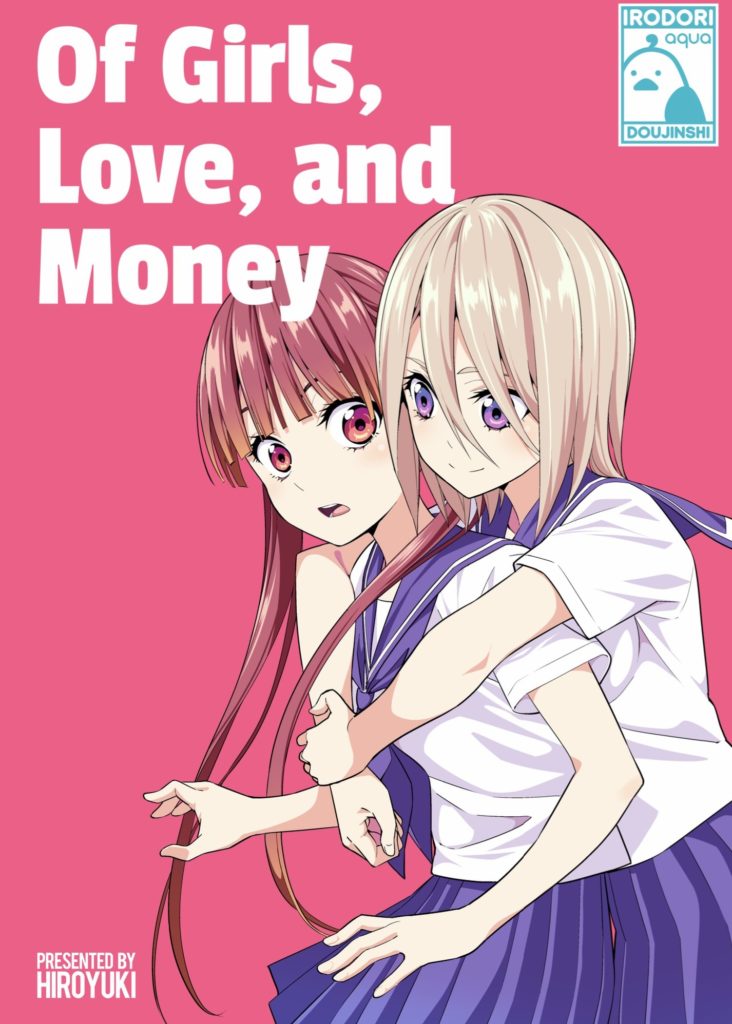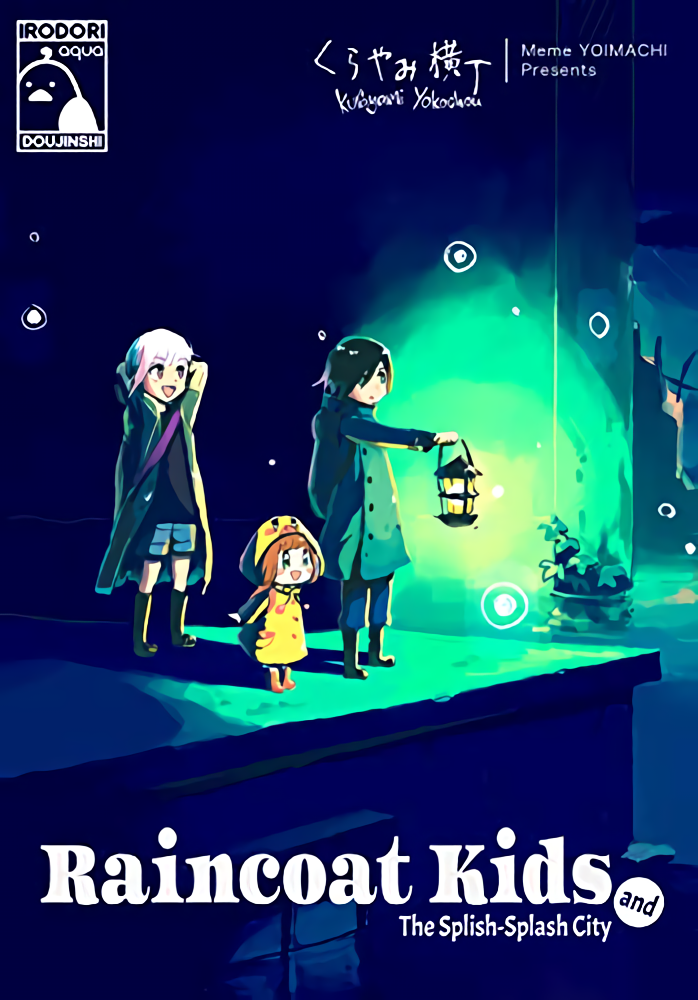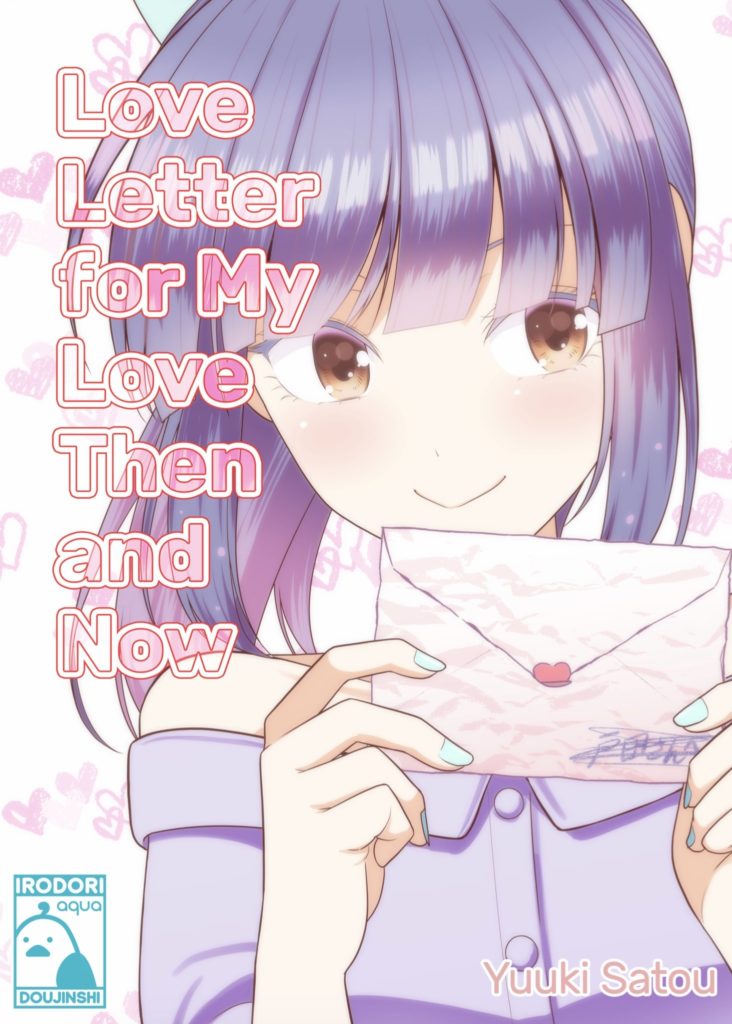An Introduction to Irodori Comics Aqua
If you read the word “doujinshi” I’m sure the first thought many of you have is erotic, often hentai, manga. However, in Japan doujinshi means a lot more than erotic comics, it encompasses a whole host of comics that are self-published by the creator and made available to buy and read either at events like Comiket or online.
Today I’m here to talk about Irodori Comic Aqua, a new imprint from Irodori Comics that hopes to bring doujinshi to the West and make them more readily available to (and understood by) manga fans here. Irodori Comics themselves publish hentai doujinshi, but the Aqua imprint is focused on releases that appeal to readers of all ages and aren’t erotic.
This week Irodori Comics Aqua are releasing their first four titles, which I’m here to take a look at.

First up we have Two-Timing Fair and Square and Of Girls, Love, and Money both of which come from Aho Girl mangaka Hiroyuki. Both series are romantic comedies, but Of Girls, Love and Money is the creator’s first steps into the yuri genre
Of Girls, Love, and Money follows the story of Miho and Sachiko. The two are graduating soon and Miho asks Sachiko if she has any dreams for the future, to which Miho responds that she dreams of being pampered for the rest of her life and given $1,000 spending money a day. Sachiko calls Miho an idiot but vows to be the one to support Miho’s dreams nonetheless.

Meanwhile, in Two-Timing Fair and Square we follow Naoya who is confessed to by a cute girl called Tomomi. The problem is that he already has a girlfriend! Naoya loves his girlfriend, Saki, but he’s also attracted to Tomomi, so asks Saki if she’d be okay with him dating both of them at the same time. Understandably Saki is not okay with this and punches Naoya in the gut, but when asking Tomomi how she feels, she reveals that she’d rather be two-timed than outright rejected. Pleaded with by Tomomi (whom Saki has become fond of) and Naoya, she agrees to a one-week trial to see how things go. Will three be a crowd or just right?
While I’m sure Two-Timing Fair and Square will rub many readers the wrong way, both of these stories showcase Hiroyuki’s entertaining blend of comedy and idiotic characters. Of the two Of Girls, Love and Money is the better story although it does feel a little bland in places. Being Hiroyuki’s first yuri story it’s clear they’re not quite sure how to have the two girls interact, but I think it comes together well in the end and I wouldn’t mind seeing more of it in the future (the afterword suggests Hiroyuki will return to the cast someday). However, if Two-Timing Fair and Square sounds like your kind of thing, then it is the longer of the two releases, coming in at almost 60 pages compared to 30 which gives it space to include a lot more comical scenes than the other title.

Next up we have Raincoat Kids and the Splish-Splash City by Yoimachi Meme, which is perhaps the most inventive title among the four. The series has been drawn in a picture-book style, with every page being presented in a landscape format. The story follows Minato who is bringing his little sister, Shizu, to meet their father. With the help of their bodyguard Toka, the three wander through the Splish-Splash City to find a route to their destination.
Raincoat Kids and the Splish-Splash City is the perfect title to give to younger readers, both for its picture book presentation and likeable young characters. The artwork reminds me of Western indie games influenced by Japanese media. It’s clear that this is a manga but it’s also crossing the boundaries into Western comics – especially given the magic lantern and umbrella our cast utilise throughout the story. The artwork is beautiful and worth flipping through all by itself. This title is on-going which means we’ll be seeing plenty of it in the future!

Last up we have Love Letter for My Love Then and Now by Yuuki Satou, my personal favourite of the four releases. There is an interesting story behind this one’s history, as it came about thanks to a YouTube Hiroyuki, Tomokichi and Yuuki Satou all took part in. The game aimed to have the three each create 4-page one-shot comics posted on Twitter and see who could get the most likes. Love Letter for My Love Then and Now became immensely popular, leading Satou to turn the title into a new series.
This one follows the story of Kazuya Kawaguchi who has had a crush on Miki Toda since elementary school, but his attempts to give her a love letter have always failed. In a strange twist of fate, the two reunite at an alumni homecoming and eventually begin dating. Eventually the two move in together and while packing up Kazuya’s things Miki discovers a stack of undelivered love letters!
Miki teases Kazuya, asking who they were intended for, encouraging him to finally hand them to his old crush. This leads to Kazuya giving in and handing over the stack of letters to Miki! Declaring that he’s loved her all this time, Kazuya’s wish of giving the letters has finally come true but just what prevented him delivering them originally? Love Letter for My Love Then and Now sets out to take a look at this sweet love – both then and now.
Of the four doujinshi being released by Irodori Comics Aqua, I think Love Letter for My Love Then and Now feels most like what you’d expect of a typical manga series. It offers the kind of longevity in its story that readers will expect from traditional manga, while also having the freedom of a doujinshi. The artwork is attractive, with likeable character designs and well detailed but not cluttered backgrounds.

Overall, the four offerings from Irodori Comics Aqua are varied in genre, length, artwork and likability. The team have done well to license a selection that should have something for everyone, but undoubtedly there will be some sticking points. The most notable ‘issue’ here is that each of these titles ranges between £3.99 and £5.99 and that’s quite a lot for 30-50 pages of content.
Doujinshi are typically more expensive due to the fact they’re self-published by the creators and in Japan, this is well known, but that understanding in the West isn’t as prevalent. This is especially a problem when they’re competing against manga which is £7 a volume for double the page count. I also think that, unfortunately, the shorter nature of doujinshi, coupled with the price will put buys off buying further instalments unless they already know and like the artist. To ensure readers keep coming back for more, the manga needs a serious hook and all of these are lacking in that department for me.
Having said that, Irodori Comics are working hard to educate the Western market on what Doujinshi are and why they’re more expensive than their fully published manga counterparts. In time the company will undoubtedly find itself within a small niche market. As long the quality and pace of their releases keep up, I’m sure manga fans will each find something they enjoy and want to purchase. If nothing else, this is a promising start!


